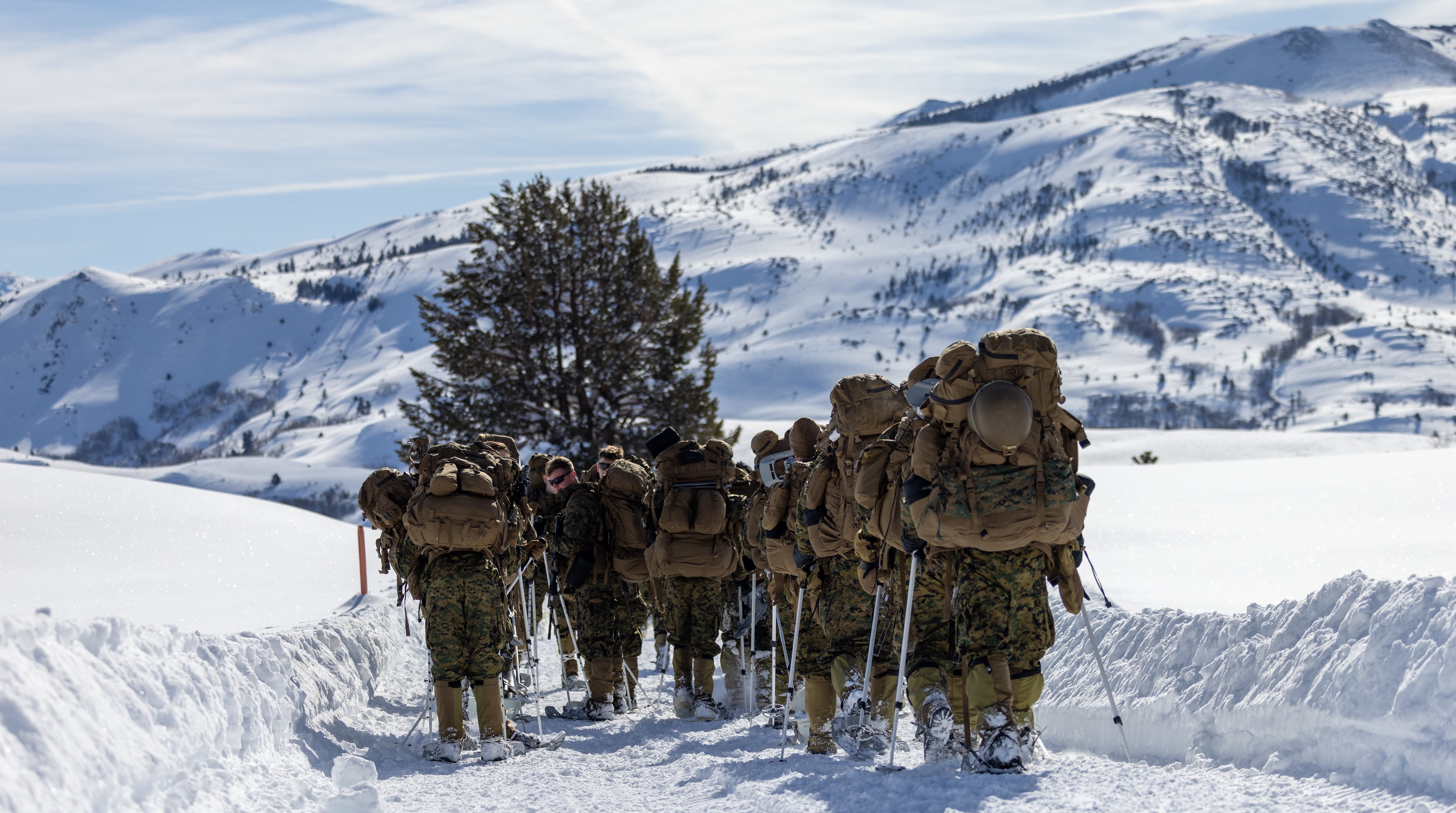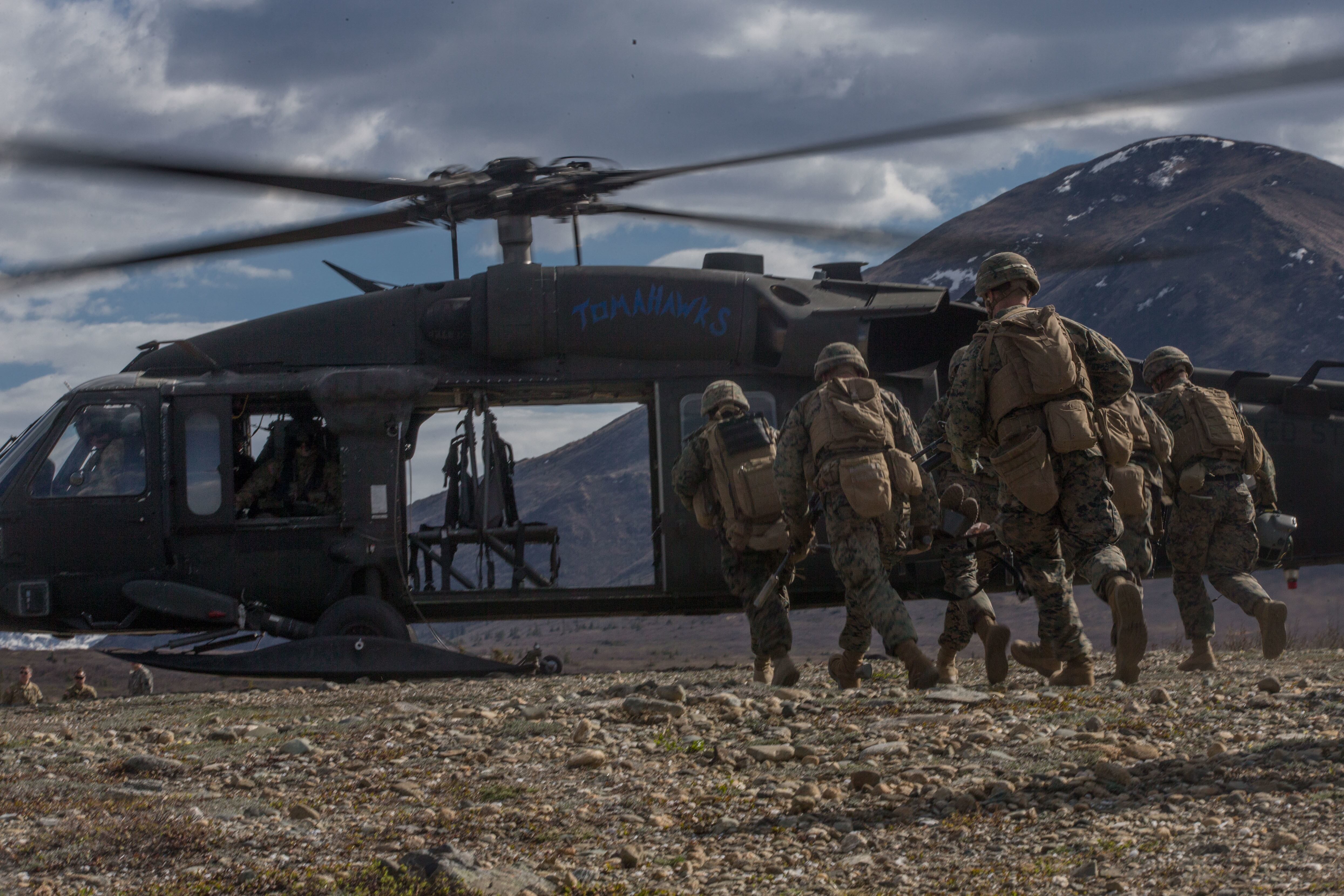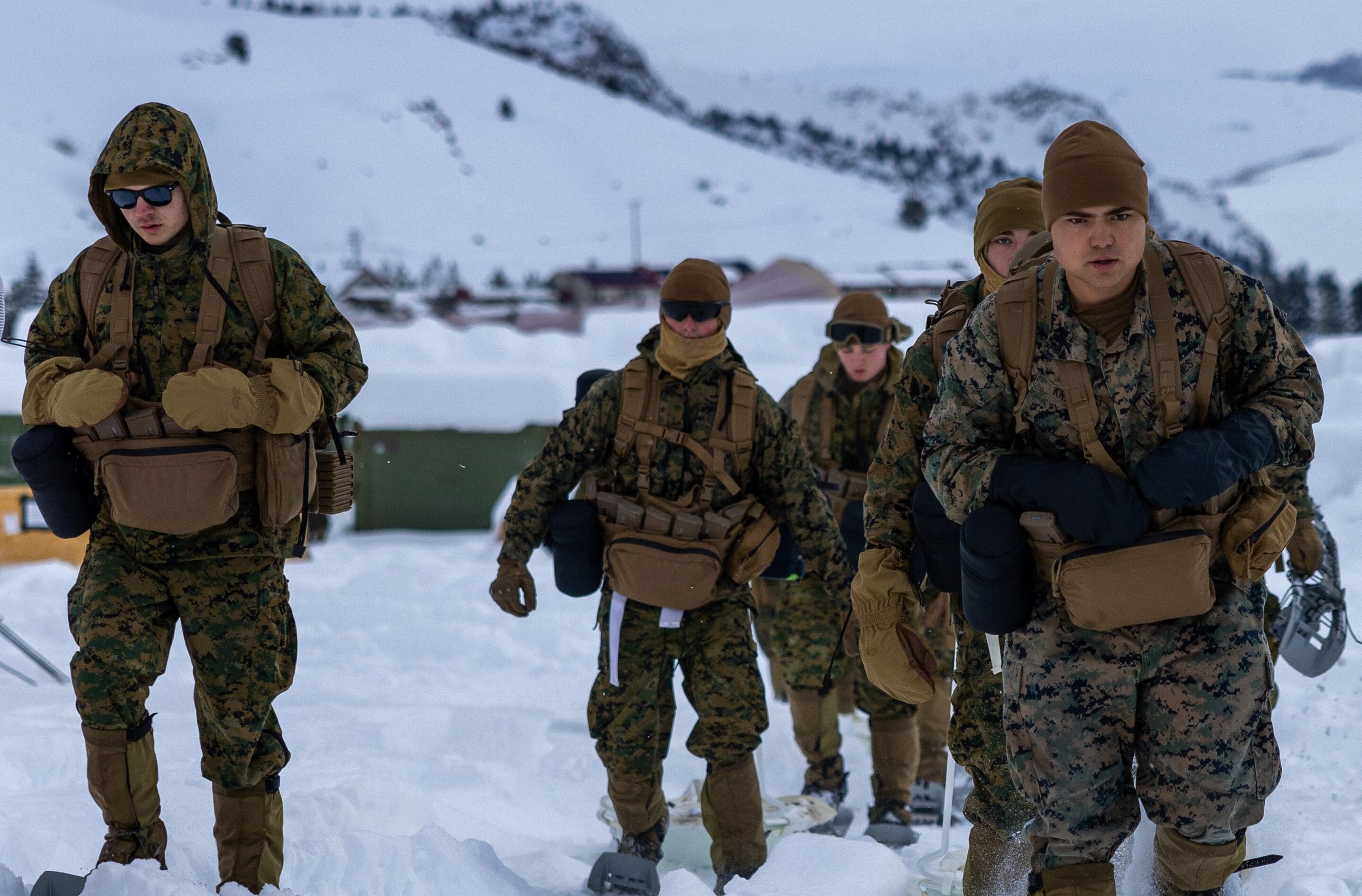Lace up your intense cold weather boots: The Marine Corps is considering training its troops in Alaska, according to the service’s new training and education blueprint.
In the planning document, the service notes the need to explore options to expand “unit and service-level training into Alaska” and whether the service requires a more permanent presence there.
The Training and Education 2030 document, which was released on Tuesday, is the most recent report in a series of policy plans that aim to set a new direction for the service. Included in the report is a direction to analyze if the cold, remote environment of Alaska could offer Marines a new style of terrain they have not regularly had the opportunity to train with.
Currently, the Marine Corps Mountain Warfare Training Center in Bridgeport, California, is one of the only installations to offer Marines training in mountainous, cold-weather environments.
Lt. Gen. Kevin Iiams, commanding general of Marine Corps Training and Education Command, said during a roundtable event with reporters at the Pentagon Tuesday, “Our cold weather training range up at … Bridgeport, while large, is nowhere near as large as the training ranges in Alaska.”
“You can put much larger forces into the field and exercise them then we can at our small training facility ... at Bridgeport,” he said.
Marines also have conducted cold-weather training on deployments to Norway.

“The current T&E system is not preparing the Marine Corps for the future operating environment,” the report said, noting that Marines need to be better equipped to handle all types of domains.
With a renewed focus from the Marine Corps on the Indo-Pacific, and continual threats from countries like Russia, North Korea and China, the service is eager to resolve that dilemma.
“Every clime, every place,” Col. Mark Smith, the director of Training and Education Command’s Range Training Programs Division, said at the roundtable.
By April, the Marine Corps says it will “identify supplemental ranges, training areas, and federated [virtual simulator] venues” to offer all types of training for troops, the T&E 2030 document notes.
Service leaders are especially interested in the use of high-tech simulators as a modern means of training troops and are looking to operationalize what they call Project Tripoli to connect Marine Corps, joint and partnered nation units around the globe.
Marines across installations will be able to jump into a virtual space and interact with one another in order to practice simulated missions, according to Iiams, meaning a lance corporal wearing ocular lenses on a range somewhere can look up and see a plane flying overhead operated by a pilot using another simulator.
“We’re also going to have ... real time feedback,” Iiams said at the roundtable, offering troops better assessments as they move on through an exercise.
The T&E 2030 document notes that the Corps will have a cost estimate for the project by March and that it will be fully employed by September 2024.
The report also calls out the need to evaluate the service’s airspace needs in support of expanded training across its installations.
In other training news from the roundtable, Col. Eric Quehl, TECOM’s director for policy and standards, shared that a “rigorous” advanced rifle qualification course after entry-level training is being piloted and is “progressing toward full operational capability.”
RELATED

The T&E 2030 report serves as the third document to come from the commandant’s 2019 planning guidance, following the Force Design 2030, released in March 2020, and the Talent Management 2030, released in November 2021.
A further timeline on when the evaluation of using Alaska for Marine Corps training purposes has yet to be announced, though Iiams said at the roundtable than an annual update on the T&E 2030 report, similar to the other planning documents, is likely.
Jonathan is a staff writer and editor of the Early Bird Brief newsletter for Military Times. Follow him on Twitter @lehrfeld_media





